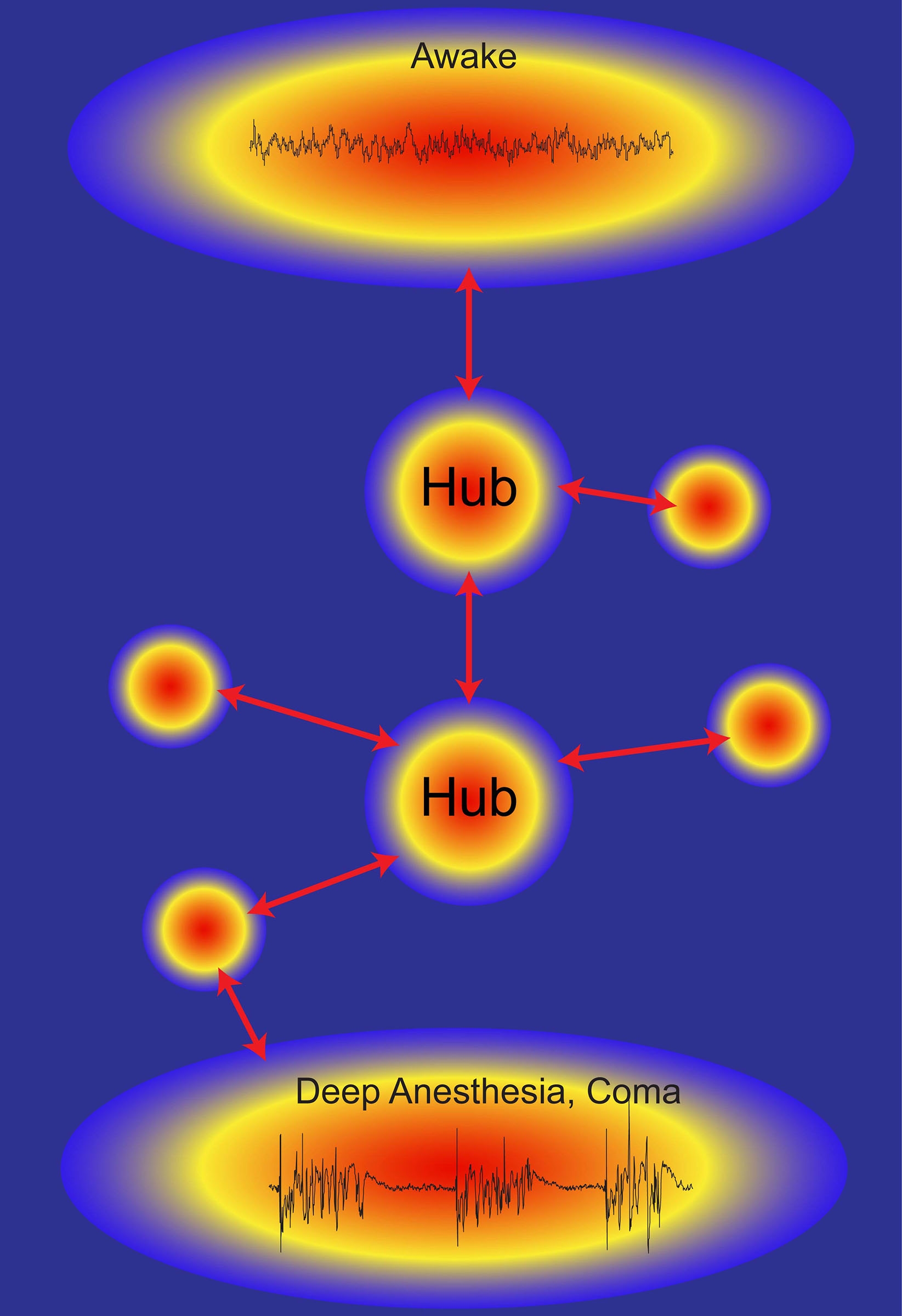Brain researchers had assumed that coming out of anesthesia after surgery would be a smooth and gradual upward ride into consciousness. But a research team led by Weill Cornell Medical College has found that the brain powers up in a herky-jerky manner, sometimes moving closer towards awakening and then taking a step back.
The findings, reported June 9 in PNAS, offer a welcome step forward in solving two big puzzles that have befuddled clinicians: How can anesthesiologists ensure their surgery patients are truly unconscious before they operate, and how can neurologists characterize the level of consciousness in a brain-injured, unresponsive patient?

The brain passes progressively and abruptly through patterns of activity as it awakens from unconsciousness. Each oval represents a discrete activity state, and the arrows show transitions among them. Image: Alex Proekt
If neurologists knew such patients were close to consciousness, but stuck at a certain level, they might be able to devise methods to force the brain to move stepwise into consciousness, says the study's senior investigator, Dr. Alex Proekt, an assistant professor of anesthesiology at Weill Cornell Medical College.
"The hope is that results from this study can help us understand the signatures of electrical activity in the brain that represent different stages through which the brain must pass through in order to recover consciousness," Dr. Proekt says.
"This is progress, because without detailed understanding of how we recover consciousness, it is not possible to determine whether a brain-injured patient may be moving towards recovery or if an anesthetized patient is on the verge of awakening during surgery."
In the study, the researchers anesthetized rats and then gradually lowered the dose of the drug isoflurane while recording electrical activity in the brain's anterior cingulate, retrosplenial cortices and the intralaminar thalamus, areas that are involved in brain arousal and anesthesia. They found that recovery was characterized by abrupt changes in neuronal activity.
"Brain waves at different frequencies suddenly appeared and disappeared. Furthermore, some of these patterns of activity formed "way stations," or hubs that the brain must pass through in order to proceed further towards awakening," Dr. Proekt says.
He likened the activation of brain consciousness to a "reboot" of a computer.
"When a computer is shut down — perhaps by mistake, such as by a power outage — it goes through a sequence of events to return to where it was before the blackout," Dr. Proekt says. "The computer takes an orderly progression by activating programs, one at a time.
"We are proposing that because there are so many states a brain can take, it has to have a guide for reactivation, such as an ordered progression like a computer-boot sequence. The brain passes progressively and abruptly through discrete states, and while transitions between some of these activity states are spontaneous, transitions between others are not," he says.
While the dive into unconsciousness and the rise to consciousness "is complicated, we are now beginning to see a structure that helps us decode the process, which we hope will be a benefit for our patients," Dr. Proekt says.
Researchers from the University of California, Los Angeles, and Rockefeller University contributed to the study.
